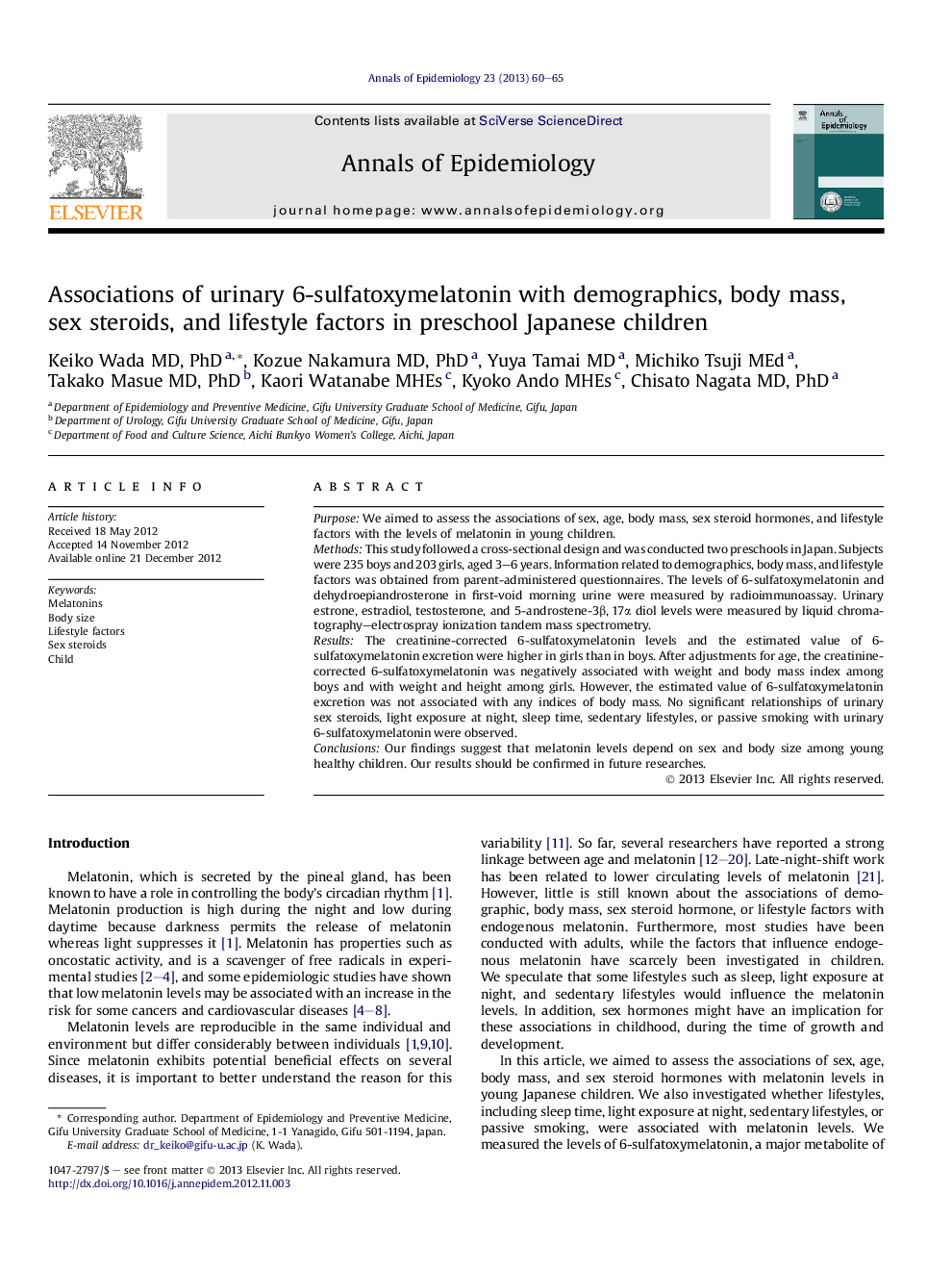| Article ID | Journal | Published Year | Pages | File Type |
|---|---|---|---|---|
| 3444246 | Annals of Epidemiology | 2013 | 6 Pages |
PurposeWe aimed to assess the associations of sex, age, body mass, sex steroid hormones, and lifestyle factors with the levels of melatonin in young children.MethodsThis study followed a cross-sectional design and was conducted two preschools in Japan. Subjects were 235 boys and 203 girls, aged 3–6 years. Information related to demographics, body mass, and lifestyle factors was obtained from parent-administered questionnaires. The levels of 6-sulfatoxymelatonin and dehydroepiandrosterone in first-void morning urine were measured by radioimmunoassay. Urinary estrone, estradiol, testosterone, and 5-androstene-3β, 17α diol levels were measured by liquid chromatography–electrospray ionization tandem mass spectrometry.ResultsThe creatinine-corrected 6-sulfatoxymelatonin levels and the estimated value of 6-sulfatoxymelatonin excretion were higher in girls than in boys. After adjustments for age, the creatinine-corrected 6-sulfatoxymelatonin was negatively associated with weight and body mass index among boys and with weight and height among girls. However, the estimated value of 6-sulfatoxymelatonin excretion was not associated with any indices of body mass. No significant relationships of urinary sex steroids, light exposure at night, sleep time, sedentary lifestyles, or passive smoking with urinary 6-sulfatoxymelatonin were observed.ConclusionsOur findings suggest that melatonin levels depend on sex and body size among young healthy children. Our results should be confirmed in future researches.
